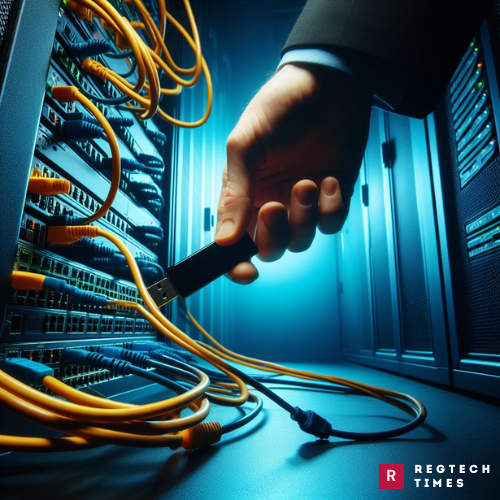In the contemporary landscape of cybersecurity, the threat of insider fraud persists as a formidable challenge for enterprises worldwide. Recent cases prosecuted by the U.S. Attorney’s Office for the Southern District of New York (SDNY) underscore the enduring nature of this threat, highlighting the need for proactive measures to mitigate risks and protect organizational integrity.
The Ever-Present Threat
From ancient times to the modern era, the specter of betrayal from within has loomed large in the annals of history. The recent case of a cybersecurity consultant exploiting stolen proprietary information to extort a vendor organization exemplifies the audacity with which insiders leverage their access for personal gain.
Case Study: Cybersecurity Consultant Extortion
In this instance, a cybersecurity consultant utilized stolen proprietary information to demand a substantial ransom from a vendor organization, threatening to expose confidential files unless their demands were met. This brazen act underscores the vulnerability organizations face from insiders with access to sensitive data.
Case Study: Healthcare Executives Embezzlement
Similarly concerning is the case of two executives at a healthcare claims processing company orchestrating a multi-million-dollar embezzlement scheme over eight years. By fabricating vendors and invoices, these insiders exploited their positions of trust to siphon funds undetected, eroding organizational integrity in the process.
Understanding the Risks
Insider fraud, particularly within large corporations, often involves high-ranking individuals exploiting their positions and privileged access to sensitive information. Executives wield considerable influence and autonomy, making traditional detection methods challenging to implement effectively.
The Complexity of Insider Fraud Schemes
The sophistication and complexity of insider fraud schemes pose significant challenges for detection and prevention efforts. Executives adeptly conceal fraudulent activities, leveraging their knowledge of internal processes and systems to evade scrutiny and perpetrate deceit over extended periods.
The Human Element: Motivations and Opportunities
Understanding the motivations behind insider fraud is essential for devising effective prevention strategies. While financial gain is a common incentive, other factors such as resentment, greed, or coercion may also drive individuals to engage in fraudulent activities. Moreover, opportunities for insider fraud abound in organizations with lax internal controls, inadequate oversight, or a culture that condones unethical behavior.
Building Resilience: Strategies for Prevention
Addressing the pervasive threat of insider fraud requires a proactive and multifaceted approach. By implementing robust internal controls, fostering a culture of transparency, and leveraging advanced technologies, organizations can fortify themselves against the risks posed by insider malfeasance.
Robust Internal Controls
Regular audits, risk assessments, and stringent oversight mechanisms are essential components of effective internal controls. By monitoring transactions, access privileges, and employee behavior, organizations can detect anomalies and mitigate risks proactively.
Promoting a Culture of Transparency
Cultivating a culture of transparency and ethical behavior is paramount for preventing insider fraud. By instilling values of integrity and accountability, organizations foster an environment where fraudulent activities are less likely to occur and where employees feel empowered to report suspicious behavior.
Leveraging Technology and Analytics
The integration of advanced analytics and AI technologies can enhance detection capabilities, enabling organizations to identify patterns indicative of fraudulent behavior. By leveraging automation and data-driven insights, enterprises can proactively mitigate risks and respond swiftly to potential threats.
Collaboration and Knowledge Sharing
Collaboration between industry stakeholders, law enforcement agencies, and regulatory bodies is crucial for combatting insider fraud on a broader scale. Sharing best practices, insights, and threat intelligence facilitates collective efforts to identify emerging trends, develop countermeasures, and strengthen resilience against insider threats.
Regulatory Compliance and Industry Standards
Compliance with regulatory requirements and adherence to industry standards play a pivotal role in mitigating insider fraud risks. By implementing robust security protocols, data protection measures, and compliance frameworks, organizations demonstrate their commitment to safeguarding sensitive information and preserving stakeholder trust.
Conclusion
In conclusion, the recent cases from the SDNY underscore the persistent and evolving nature of insider fraud in the digital age. As organizations navigate an increasingly complex cybersecurity landscape, proactive measures, including robust internal controls, a culture of transparency, and technological innovation, are imperative for safeguarding against the pernicious effects of insider malfeasance. By prioritizing the detection and prevention of insider fraud, organizations can protect their assets, uphold their integrity, and preserve stakeholder trust in an era defined by interconnectedness and digital transformation. Through collaboration, knowledge sharing, and adherence to regulatory standards, enterprises can collectively mitigate the risks posed by insider threats and fortify their defenses against the ever-present specter of betrayal from within.



